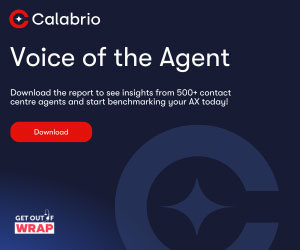A Conversation About Speed, Simplicity, and AI
Earlier this month, John Ortiz joined Steve Morrell, author of The Inner Circle Guide to Agentic AI, for a conversation about something every contact centre leader wrestles with – how to get from data to decisions faster.
They talked about Ask AI, MiaRec’s new conversational analytics feature, and how it’s helping organizations move beyond dashboards and reports into real-time understanding.
The Problem Everyone Recognizes
In nearly every contact centre I’ve worked with, there’s a familiar moment in leadership meetings:
someone asks, “Why is CSAT down?” and the room goes quiet.
There are plenty of metrics, but few answers. Analysts go off to run reports. A week later, a slide deck appears. By then, whatever caused the issue might have changed completely.
It’s not for lack of effort – it’s because insight takes too long.
That delay is exactly what Ask AI was built to erase.
Instead of waiting, leaders can just ask a question in natural language – “Why did CSAT drop last month?” or “What are customers complaining about?” – and get the answer instantly, pulled from real customer interactions.
That’s where everything changes.
How Ask AI Works in Real Life
Ask AI sits on top of MiaRec’s analytics platform, which automatically tags and summarizes every call. It understands not just words, but context: what caused frustration, what delighted a customer, what an agent did well, and where opportunities were missed.
Then, when you ask a question, it pulls from that intelligence to give you a human-readable summary.
It’s not magic – it’s simply AI meeting people where they think.
And it’s that simplicity that turns information into action.
The Hospitality Story: When Fast Insight Builds Loyalty
In the interview, I shared one of my favourite real-world examples, a large hospitality contact centre that handles around 50,000 calls every month. About a thousand of those are complaints.
Traditionally, their analysts would spend days trying to categorize those complaints.
Now, they just ask Ask AI:
“What are the main reasons behind customer complaints this month?”
Seconds later, the answer appears:
“Gym cleanliness, pricing confusion, slow room service.”
That’s all they need. They cleaned the gym the next morning, updated pricing communication, and offered guests a complimentary night.
Here’s what’s fascinating: their CSAT didn’t just recover – it rose above previous levels.
Understanding the Service Recovery Paradox
This outcome isn’t a coincidence, it’s what researchers call the Service Recovery Paradox.
The term was first explored by Christopher Hart, James Heskett, and W. Earl Sasser Jr. in their Harvard Business Review article “The Profitable Art of Service Recovery” (HBR, July 1990).
It describes a counter-intuitive phenomenon: When companies respond to a service failure quickly and effectively, customer loyalty can rise even higher than if the failure had never happened. In other words, recovery done right creates a stronger emotional connection, customers feel heard, respected, and valued.
The solid line shows customer loyalty after a failure that’s recovered well – it dips, then rebounds above baseline. The dashed line shows loyalty when no failure ever occurred.
That rebound is the paradox – the idea that a fast, thoughtful response can turn a setback into loyalty growth.
For the hospitality client, Ask AI gave them the speed and clarity to make that recovery before the story became a complaint on social media.
The Sales Story: Turning Conversations Into Conversions
The conversation with Steve also covered something that often gets overlooked – how AI can help sales teams inside contact centres, not just customer service.
MiaRec’s Revenue Intelligence module uses AI to analyse calls for buying signals, missed opportunities, and objection handling. Ask AI takes that one step further, letting leaders simply ask for patterns.
During the interview, I shared an example that always gets people’s attention.
A sales director typed into Ask AI:
“Who are my bottom five agents at objection handling?”
In seconds, the system identified the agents, showed which objections they struggled with, and summarized the key trends.
That data became the foundation for new automated coaching sessions within MiaRec.
No more generic “how to sell better” meetings, it was targeted, contextual, and fair.
Within a month, their close rates improved.
That’s what happens when feedback stops being anecdotal and becomes actionable. The sales team didn’t need more data, they needed better direction and coaching. And that’s exactly what Ask AI gave them.
The Cost Story: When AI Saves Human Time
Then there’s the story that every operations leader relates to – the one about wasted time.
A pharmaceutical contact centre we worked with had pharmacists answering calls that should’ve stayed with agents.
Questions like “What are your hours?” or “Can I get a refill?” were being escalated unnecessarily.
When they asked Ask AI:
“Why are these calls being transferred to pharmacists?”
The answer was immediate: a handful of agents were overusing transfers as a shortcut.
Once the supervisors saw that pattern, they retrained those agents. In a month, they’d eliminated 500 unnecessary transfers.
The impact went beyond cost savings. Pharmacists got their time back for the calls that truly needed them. Agents became more confident handling customer questions. And customers spent less time waiting.
That’s the kind of efficiency AI should enable, not replacement, but focus.
Why Speed Matters So Much
All three of those examples share the same lesson: speed turns insight into impact.
In contact centres, timing is everything. A delayed fix is a lost customer. A missed coaching moment is a lost sale. We’ve built so many tools for reporting but too few for responding.
Ask AI flips that script. It gives people what they need when they need it: clarity. And clarity changes behaviour.
- When leaders can ask and understand instantly, they act faster.
- When agents see feedback in context, they learn faster.
- When customers feel heard immediately, they stay longer.
That’s the kind of ripple effect we should expect from AI – not just automation, but acceleration.
What Comes Next
Ask AI already gives leaders the power to ask “why?”. Now, it’s moving beyond answers to help them decide “what next?”.
Today, it can already surface next steps drawn directly from conversation data, flagging outlier calls worth review, highlighting early churn risks, and pinpointing coaching or retraining opportunities.
The direction ahead is refinement, not invention: making those recommendations even more precise and contextual so teams can act faster with confidence.
The goal isn’t to make AI autonomous – it’s to make human decisions sharper, faster, and better informed. Because the best AI doesn’t replace judgement – it empowers it.
This blog post has been re-published by kind permission of MiaRec – View the Original Article
For more information about MiaRec - visit the MiaRec Website
Author: MiaRec
Reviewed by: Jo Robinson
Published On: 22nd Oct 2025
Read more about - Industry News, John Ortiz, MiaRec






 MiaRec is a global provider of Conversation Intelligence and Auto QA solutions, helping contact centers save time and cost through AI-based automation and customer-driven business intelligence.
MiaRec is a global provider of Conversation Intelligence and Auto QA solutions, helping contact centers save time and cost through AI-based automation and customer-driven business intelligence. 








